Microsoft Teams is being used by the largest organizations worldwide. But like other large programs, Teams often show connectivity issues.
The connection issues on Teams lead to unproductive hours that hamper the quality and productivity of most users.
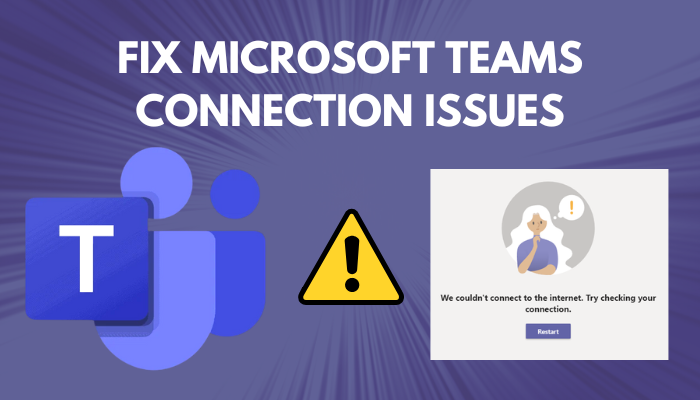
If you have landed on this page to resolve your Teams connection issues, I assure you your Teams will work fine after following the step-by-step fixes mentioned in this article.
Let’s jump in!
How to Fix Microsoft Teams Connection Issues
Most connectivity issues with Teams desktop clients usually arise from Firewall or Proxy connectivity settings. Check your Firewall connectivity settings to resolve the Teams connection issues. Also, update the application to the latest version to avoid connection errors.
You should also focus on other areas that can possibly restrict Teams from establishing an internet connection. For a detailed overview of the resolutions, consider the following methods.
Here are the methods to resolve MS Teams connectivity issues:
1. Use Teams Web Client
If you are using MS Teams desktop client for joining a meeting or accessing Teams features, you may encounter connection issues for several reasons.
In that case, you should use the Teams web client to bypass all issues. Simply open any modern browser on your desktop and go to Teams web client.
When the desktop client fails to connect with the Teams server, the web client can easily establish an excellent connection and allow you to use Teams without any error.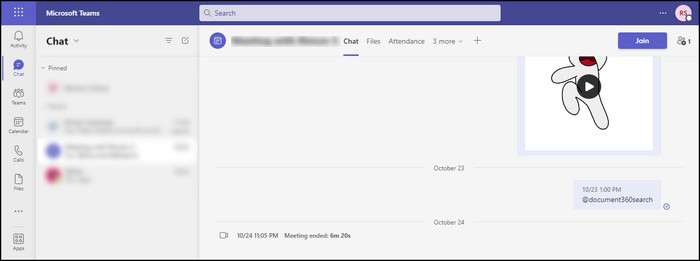
2. Check the Internet Connection
An unstable internet connection is one of the main reasons behind the Teams connectivity issue. Sometimes, Teams refuse to establish a connection through Wifi because of an unstable internet connection.
You need to ensure the Wifi connection is showing the status Connected. To find the Wifi status, open Windows Settings by pressing the Windows + I keys and go to the Network & Internet menu.
Also, ensure to check your router connection because an outdated router firmware or an issue with the router can restrict Teams from establishing an internet connection.
If you find the internet connection is working on other devices and apps but not on MS Teams, you should troubleshoot your internet connection. Check the following instructions to troubleshoot your internet connection.
Here are the steps to fix internet issues using Microsoft built-in troubleshooter:
- Press the Windows + I keys to open Windows Settings.
- Navigate to Update & Security > Troubleshoot > Additional troubleshooters.
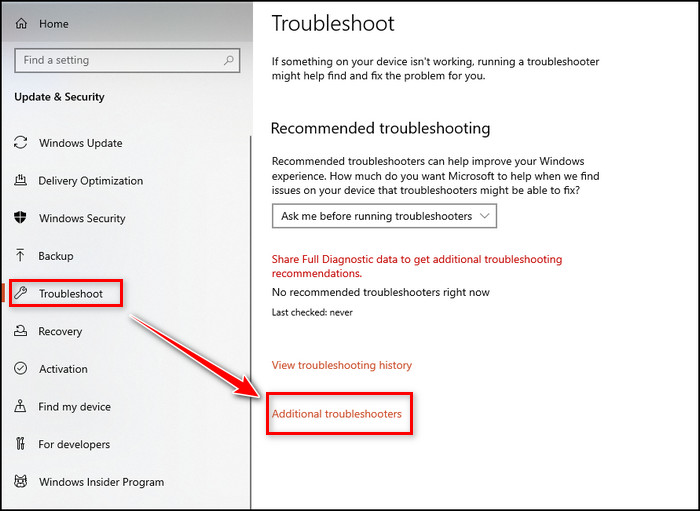
- Click on Internet Connections and select Run the troubleshooter.
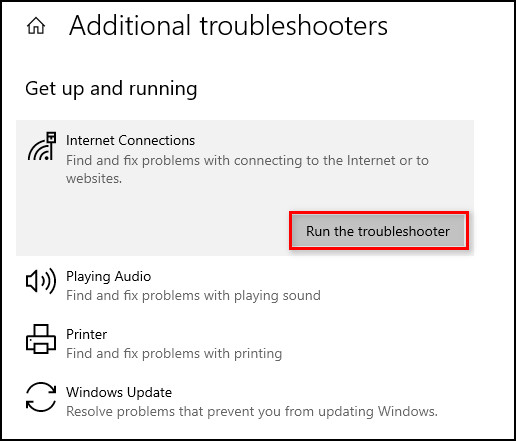
Windows will automatically detect the issues and troubleshoot them. The above procedure will also help you when you can’t see the share screen on Microsoft Teams.
3. Check Microsoft Teams Server
MS Teams server often goes down for multiple reasons. When the servers are down, Teams will fail to connect with the server. As a result, you will face connection issues.
In this scenario, you should check the MS Teams server status. To do so, go to Downdetector, powered by Ookla, to check the current server status.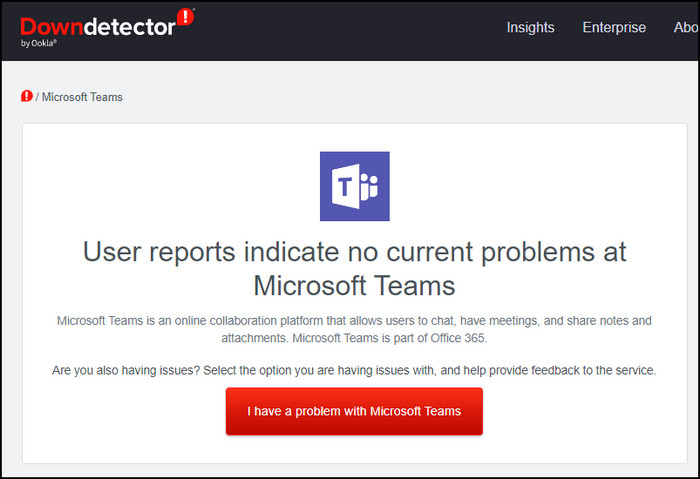
4. Allow Teams through Windows Firewall
Windows Firewall can prevent Microsoft Teams from connecting with remote servers. That will restrict Teams from establishing a connection, and you might not be able to join in a Teams meeting.
Consider the following instructions to allow MS Teams through Windows Firewall.
Here is the procedure to allow Teams through Windows Firewall:
- Press the Windows + E keys to open File Explorer.
- Enter the following address in the location bar:
- Control Panel\System and Security\Windows Defender Firewall
- Hit Enter.
- Select Allow an app or feature through Windows Defender Firewall from the left pane.
- Click Change Settings.
- Enable Microsoft Teams/ teams.exe from the apps list.
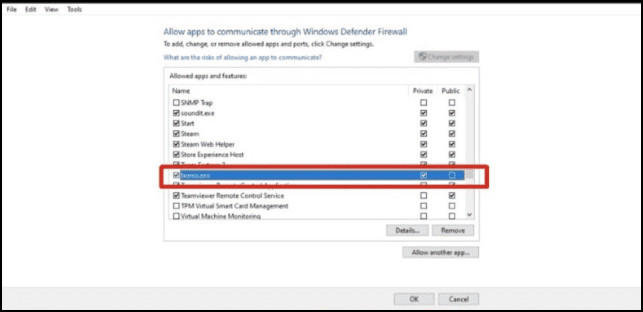
- Click OK to save the changes.
After allowing Microsoft Teams through Windows Defender Firewall, restart your computer, then launch the Teams desktop application, and check if you can join a meeting.
5. Clear Teams Cache
By default, MS Teams collect cache data to make the navigation faster inside the application. While storing the cache data, they might get corrupted for various reasons and restrict you from accessing the MS Teams server.
Clearing the cache file can establish a working connection between the app client and the server. Consider the subsequent instructions to clear Teams cache.
Here is the instruction to clear Teams cache:
- Open the Run dialog box by pressing the Windows + R keys.
- Type %appdata%\Microsoft\Teams in the box and press Enter.
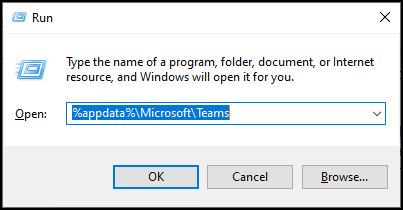
- Select the Cache folder from the File Manager menu.
- Delete the selected folder.
After deleting the cache files, relaunch the Teams desktop application, which should fix your Teams connection issues. If the problem persists, check the below procedure to update your application.
6. Update Teams
An outdated version of the Teams desktop client can lead to numerous problems. Updating the application to the latest version can resolve the most common issues, including connection issues.
Sometimes, Microsoft Teams chat messages may not appear on an outdated Teams application version. Go through the below process to update the Teams desktop app to the latest version.
Here is the way to update MS Teams application:
- Launch the Teams desktop client and sign in using your login credentials.
- Click on the three dots next to your Profile icon.
- Select Check for updates from the popup menu.
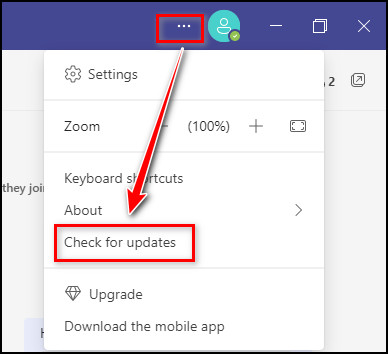
Microsoft Teams will automatically search for the updates and install them on your desktop. When the update is finished, relaunch Teams to check if the application can connect with the server.
7. Close Background Processes
Teams is a data-hungry application. To maintain a stable internet connection, you must ensure a minimum speed of 1.5 Mbps.
Teams will fail to connect with the server if you have multiple applications running in the background simultaneously, which is using a ton of data.
You should close all background processes in order to allow Teams to use maximum bandwidth. Open the Task Manager by pressing the Ctrl + Alt + Delete keys. Check the background processes and End them.
Frequently Asked Questions
Why aren’t Microsoft Teams connecting?
Microsoft Teams fails to connect because of an outdated version of the application, corrupted cache files, Windows Firewall blocking teams or the Microsoft server being down.
Why do Microsoft Teams keep disconnecting?
Teams will keep disconnecting if you have any antivirus program on the device that conflicts with the Microsoft Teams application.
Is there any issue with Microsoft Teams today?
To find out if there is any issue with the Microsoft Teams server today, go to Downdetector and search Microsoft Teams.
Wrap Up
The best workaround to bypass the Teams connectivity issues is to use Microsoft Teams for the web.
Usually, the Teams web version doesn’t show a connection error unless you are using an unstable internet connection.
So, ensure a high-speed and stable internet connection to avoid team connectivity errors. Leave a comment below for further assistance.




